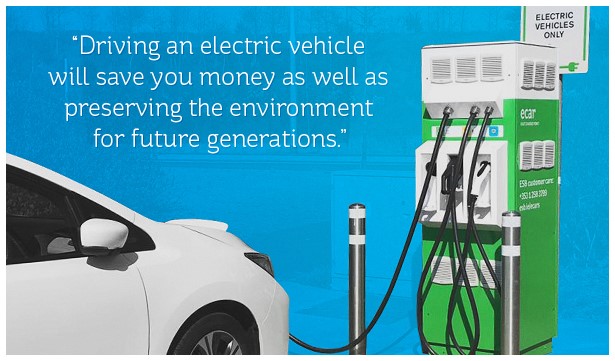3 Things to think about before buying an Electric Car

Driving an electric vehicle will save you money and help you to do your part in preserving the environment for future generations. As a secondary benefit, the quiet, smooth driving experience of an electric vehicle (EV) can’t be matched by a petrol or diesel-powered equivalent.
The process of buying an EV is much the same as buying a petrol or diesel car, you choose the number of seats and performance you need, assess how it suits your day to day life and set a budget. The difference in going electric is the details you have to think about, let’s take a look at some of the key factors.
Check Your Charging Options
The first thing to remember is that your options for ‘refilling’ your car totally change when you buy an EV. You will have the option of plugging in at home, if you have the required cable or charger, but it’s also important to familiarise yourself with ESB’s 1,000+ public charging points. Of these public charging points, the majority will charge at 22kW, taking around four hours to fully charge a typical EV. Over 70 of the ESB charging points use 43kW ‘fast charging’ which can charge most batteries to 80% in around 30 minutes. Not all EVs can avail of rapid charging but can still use rapid chargers at a slower charging rate.
Take a look at the network near you and your most common journeys to see where you can top up without changing your habits. Range is still a factor for a lot of people considering going all-electric but you might be surprised at how many options you actually have near you. For some context, the average range of a new all-electric car in Ireland is well over 200 kilometres(km) on a single charge. This figure dwarfs the average Irish journey distance of 14.6 km.
Of course, charging from home will be the most convenient way to keep topped-up and there are many dedicated home charging units available. Home installations charge at a slower rate than public infrastructure - around half as quickly.
All-Electric Vehicle or Plug-In Hybrid
An all-electric vehicle runs exclusively on battery power and is ‘refilled’ from a charging point. These are the cleanest and quietest vehicles on the road but, for long distance travel, some of you might be looking for a greater range than an all-electric can currently offer.
The charging network in Ireland will allow you to make most journeys with minimal delays and much more cost-effectively than a petrol or diesel car. However, if you are looking for an alternative to fully electric car, you don’t have to go straight to diesel or petrol. A plug-in hybrid (PHEV) combines the range of petrol/diesel with some of the potential savings and environmental benefits of electric.
You can drive a PHEV like an all-electric on shorter journeys, i.e. charging your vehicle from your home charger or public charging point and propelling it using battery power only. Though it must be noted that PHEVs typically have a significantly lower on-battery range than an all-electric.
For longer journeys, a small petrol motor in your PHEV will charge your batteries or provide power to the electric motor when you need it. That allows a Mitsubishi Outlander PHEV with a full fuel tank and battery pack to offer a range of 600km, which for now is more than you get with a standard EV. Just remember that battery technology and EV ranges are improving all the time, and PHEVs can’t match the environmental benefits of a full EV.
New vs Second-Hand
A decade of growing EV sales means that it is possible to find a second-hand EV, however there are a few factors to consider if you’re looking at this option. Electric vehicles have fewer moving parts so wear and tear should be lighter for an electric vehicle of a given age versus a petrol or diesel one. The main part of a second-hand electric vehicle to think about is the battery.
Second-hand owners cannot avail of power pack repair/replacement under warranty unless offered as part of the used sale so checking for battery degradation before purchasing a used vehicle is a must. This can be done at any garage that services EVs.
Like any other rechargeable battery, the Li-ion power packs of an EV lose a small fraction of their maximum capacity over time. The rate of capacity loss for a typical EV power pack is around 2-2.5% per annum so a 5-year-old EV won’t quite reach the same range as a new one but a 10 year old EV will still have around 80% of their original charge capacity.
Replacing or refurbishing a power pack out of warranty can be expensive; a Nissan Leaf battery repair costs around €5,000. In Ireland, battery warranties are typically 5-8 years and/or set distance driven. For example, the Hyundai Kona Electric offers an 8-year or 200,000km battery warranty alongside it’s 5-year general warranty while the Nissan Leaf offers an unlimited 5-year warranty for its battery.



